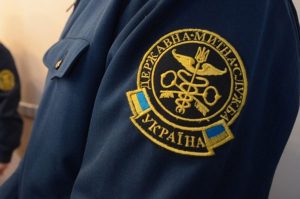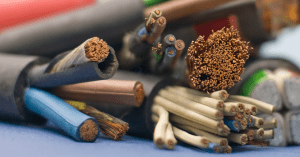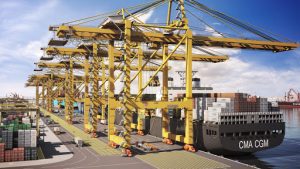Ukrainian banks’ cash exchange rates on 05/04/21

Source: Interfax-Ukraine

More than 100 employees of regional departments of the State Customs Service of Ukraine, including 17 heads of customs offices and customs posts were suspended from their duties after a meeting of the National Security and Defense Council (NSDC) of Ukraine, the press service of the State Customs Service has reported.
“Now, in addition to personal sanctions against a circle of persons whose activities are associated with smuggling, measures are being taken against customs officials who may be involved in corrupt practices. As of today, the employees have been suspended from their duties in the following territorial bodies: 22 employees in the Odesa customs office; 23 in the Zakarpattia office; 8 in Kyivska office; 23 in the Volyn office; 46 in the Halytska office; and 3 in the Bukovyna office,” the State Customs Service said in a report on Friday evening, April 2.
As reported, Ukrainian President Volodymyr Zelensky said after a meeting of the NSDC that dozens of officers of regional departments of the State Customs Service of Ukraine have been suspended from work.
“Dozens of customs officials have been suspended from work. And we are also preparing legislative changes, which will result in the criminalization of inaccurate customs declaration,” the president said.
He said the reason for the decision is the losses incurred by the Ukrainian budget due to the ineffective work of customs.
“According to experts, losses due to smuggling reach UAH 300 billion, which the state budget lost. More than UAH 100 billion of them [were lost] due to the ineffective work of customs,” the head of state said.
He said that Ukraine will continue fighting very hard against smuggling, as it is “economic terrorism.”

The powers of architectural and construction control will be transferred to local authorities by the end of 2021, Minister of Communities and Territories Development of Ukraine Oleksiy Chernyshov has told Interfax-Ukraine.
“My mission as minister of communities and territories development is to transfer powers to the communities. The deadline will be determined by law [on the reform of the system of architectural and construction control]. The beginning of a new budget year would be perfect so that communities have the opportunity to prepare for the high-quality performance of their powers,” Chernyshov said.

The American Chamber of Commerce in Ukraine urges members of the Interdepartmental Commission on International Trade (ICIT) not to introduce special measures in the form of the special duty on imported wires to Ukraine, regardless of the country of origin and export, the Chamber said in a Monday press release.
On March 29, 2021, the Ministry for Development of Economy, Trade and Agriculture of Ukraine published the Basic Facts and Conclusions on the Special Investigation on the Import of Wires to Ukraine Regardless of the Country of Origin and Export. According to the basic facts and conclusions, the Ministry recommends introducing special measures in the form of the special duty of 23.5% for three years (with the subsequent liberalization).
“The potential introduction of the special duty on import will in fact, turn into the extra tax to be paid by the telecommunication industry. It will adversely affect mobile operators’ investment capacity because instead of investing in infrastructure, mobile operators will have to pay additional duties,” the Chamber said.

President of Ukraine Volodymyr Zelensky has said that in 2020, bilateral trade between Ukraine and Qatar doubled, despite the spread of the coronavirus pandemic, the press service of the head of state reported.
“Trade and economic cooperation underpins our relations with Qatar. I am pleased that bilateral trade following the results of such a difficult “pandemic” year 2020 reached high levels – almost $150 million. This is twice as much as, for example, in 2018. And this year, the momentum of trade between our countries has also been increased,” Zelensky’s press service said, quoting the president as saying in an interview with Qatari media outlets.
According to Zelensky, “the potential for trade and economic cooperation with Qatar can be much higher.”
Among examples of opportunities for bilateral economic growth, Zelensky noted the concession of the Ukrainian port of Olvia by the Qatari company QTerminals, as well as the implementation of domestic Ukrainian national programs to attract foreign investors.
He recalled that “in February 2021, he signed a law on so-called “investment nannies,” which provides strategic investors, whose investment amount exceeds EUR 20 million, with state support.”
In addition, “the Big Construction project, which provides for the construction of roads and other infrastructure facilities, is promising for investors.”
Also, according to Zelensky, “in the summer of 2021, a land reform, which establishes transparent relations in the agricultural sector and creates conditions for investing in livestock, agricultural processing, and logistics infrastructure, will start in Ukraine.”

The Cabinet of Ministers of Ukraine has established the National Investment Fund of Ukraine in the form of a state-owned enterprise with an authorized capital of UAH 100 million.
The corresponding government decree of March 31 was published in the Uriadovy portal.
According to the decree, the Ministry of Economic Development must, within a month, develop a bill on the National Investment Fund, which, in particular, provides for mechanisms for creating joint investment projects with the sovereign funds of the United Arab Emirates, the State of Qatar and other states, as well as a bill on amendments to the law on the state budget for 2021.